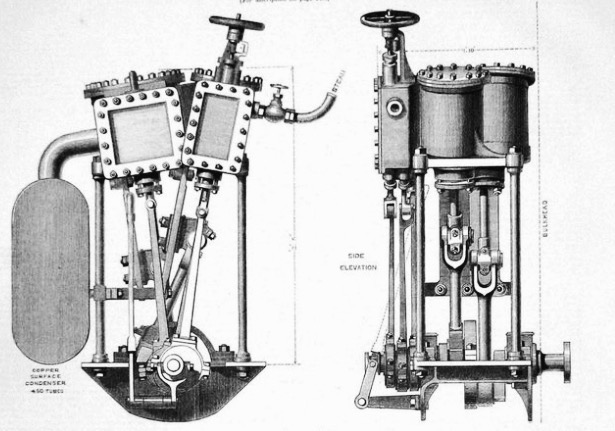

- © 2018 Steve Allen Contact Me 0


Stuart Twin No.7v
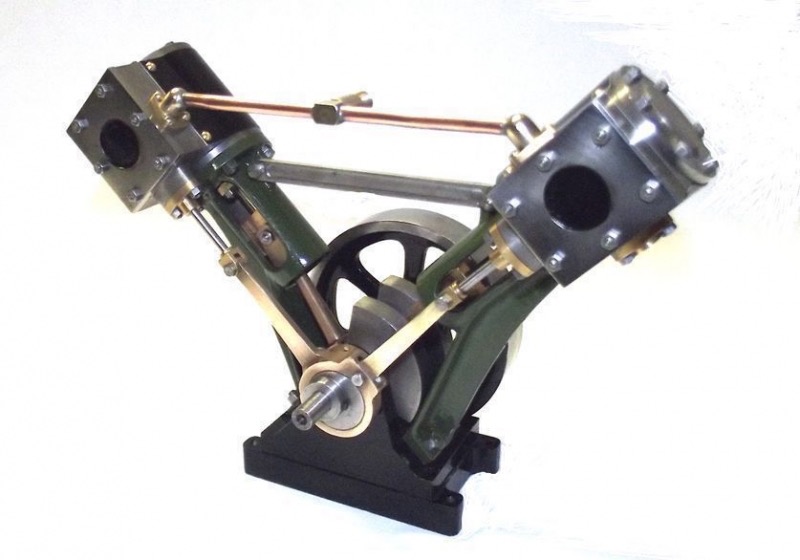
CONTENTS
Cast Iron:- Boxbed, standards, cylinders, valve chests and covers, top and bottom cylinder covers, pistons, eccentric sheave, 1 7/8in Disc Wheel.
Gunmetal:- Slide valves, eccentric strap, connecting rods, valve operating blocks, glands, crossheads, crankshaft bearings.
Steel:- Crankshaft, piston and valve rods, all materials for valve gear.
Sundries:- Detailed drawings, cylinder lagging, gasket material, gland packing, fixings pack.
This is radical design change in Stuarts main range of engines, although they did produce a small engine in this configuration. The new castings abound and start with the combined base / soleplate. This chinky casting is in a roughly triangular form. Two brass bearings at the top mount the crankshaft. the sides are machined at 45 degrees to mount the standard castings, mounted at 90 degrees to each other. The standard is also new, it looks like a 7a standard but with only one mounting column the second on haceing been removed and replaced with a small brackes for mounting the bracing strut. At first glance the two standards appear to be in alignment but cloer look at the big ends indicates that the right hand standard is mounted slightly forward of the left one, more explanation later. The trunk crosshead guide remains. Cylinders, valve chests appear the same as the 7a. The crankshaft is another area of change.Despite this being a twin engine design there is only one crank web, both cylinders being connected to the one web. The web is wider to allow two big ends to mount. Because this is a large amount of weigh offset it would cause a large amount of vibration so seperate counter weights have been attached by means of a single screw each. The valve eccentric is the last area of difference as both share a single eccentric and eccentric strap. The eccentric appears to be the same as on other 10 series engines, the strap, while looking similar has one fixed rod as well as a bracket to allow a second pivoting rod. A small flywheel wheel appears to be the same as for the 7a.
So why a V layout engine? The V layout is pretty rare amongst full sized steam engines, most engines are upright , inverted or horizontal. Twin cylinders are usually inline, adjacent or opposing. The layout is usually determined by the convenience of positioning the cylinders and the crankshaft. Size of the engine was determined by the power required and was not normally a design limiting factor except for mobile engines. Marine engines fitted into large ships generally are inline with the crankshaft at the bottom and cylinders at the top, this leads to quite tall engines that are long and narrow, not an issue in a big ship. In a smaller boat the height and length, combined with the required long low marine boiler can cause space issues. The length of the engine can be considerably be shortend using the V layout, the height of the engine is also reduced at the expence of increased width, not normally a problem with smaller boats. With inline engines the heavy cylinders are at the top, any roll in the boat will move this weight outside the centre of buoyancy and can cause stability issues, with the V design the two cylinders counterbalance each other and would have no impact on roll. I have done some extensive searches for V layout steam engine and could only find two examples, a small marine engine and an engine for a steam car. Whilst not a common layout for full sized engines it is very convenient for those requiring an engine for a small model steam boat, being considerably shorter in length than the D10 or launch engines, lighter in weight and having reduced roll effects.
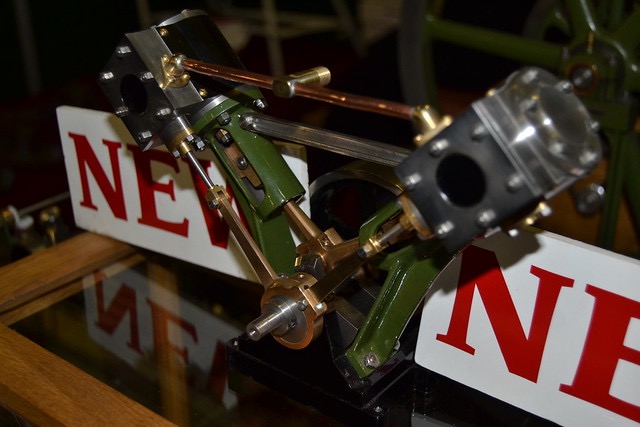
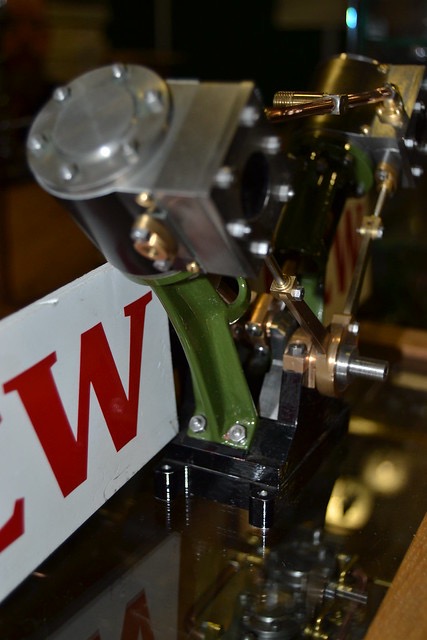
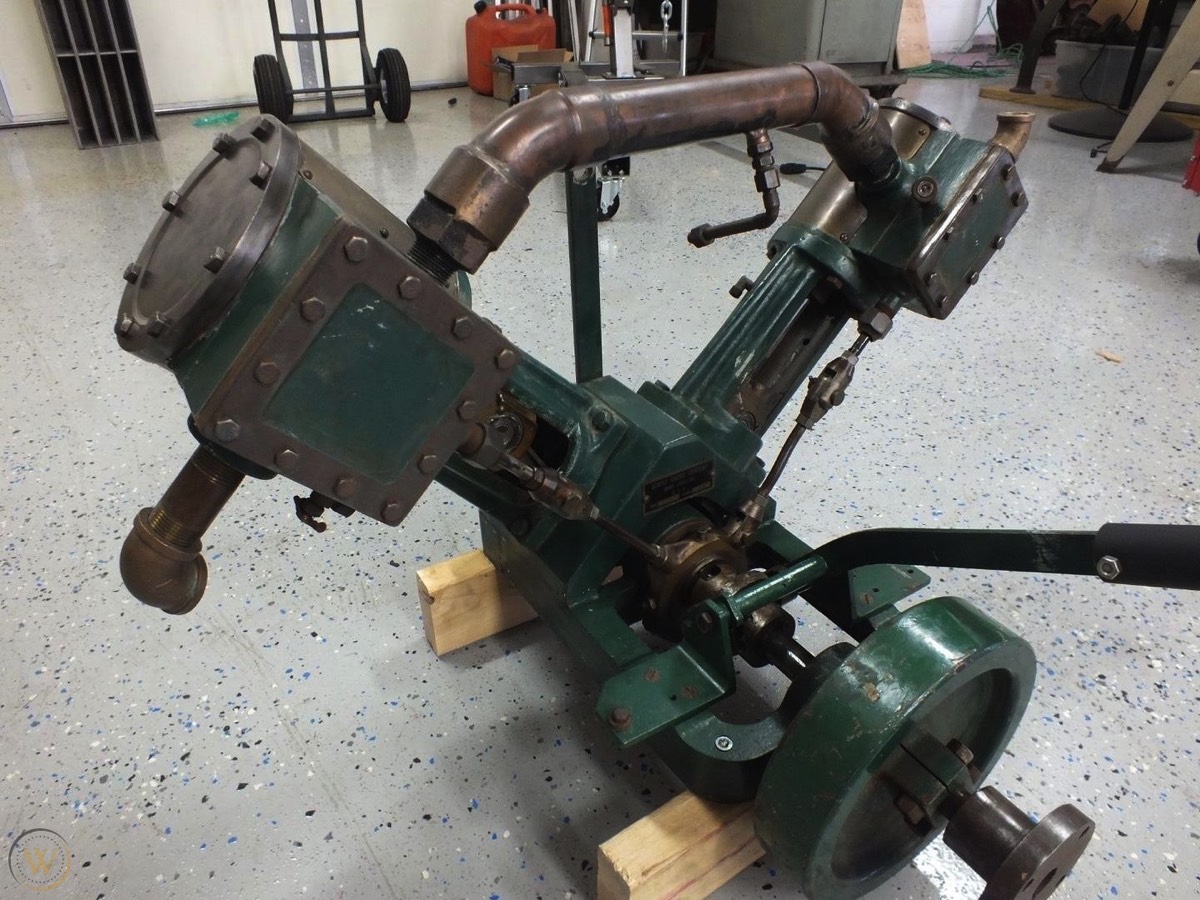
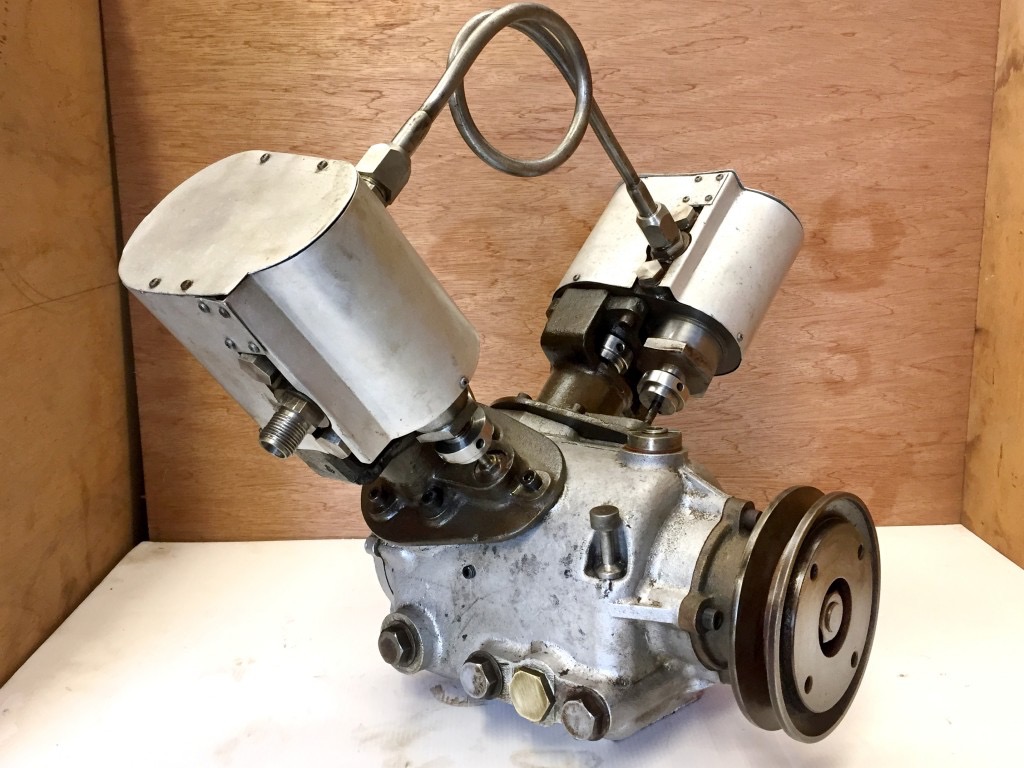
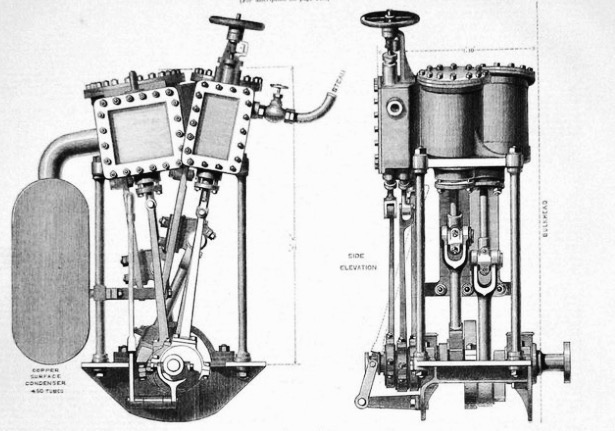
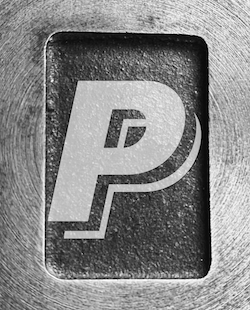
Please Consider Making a Donation